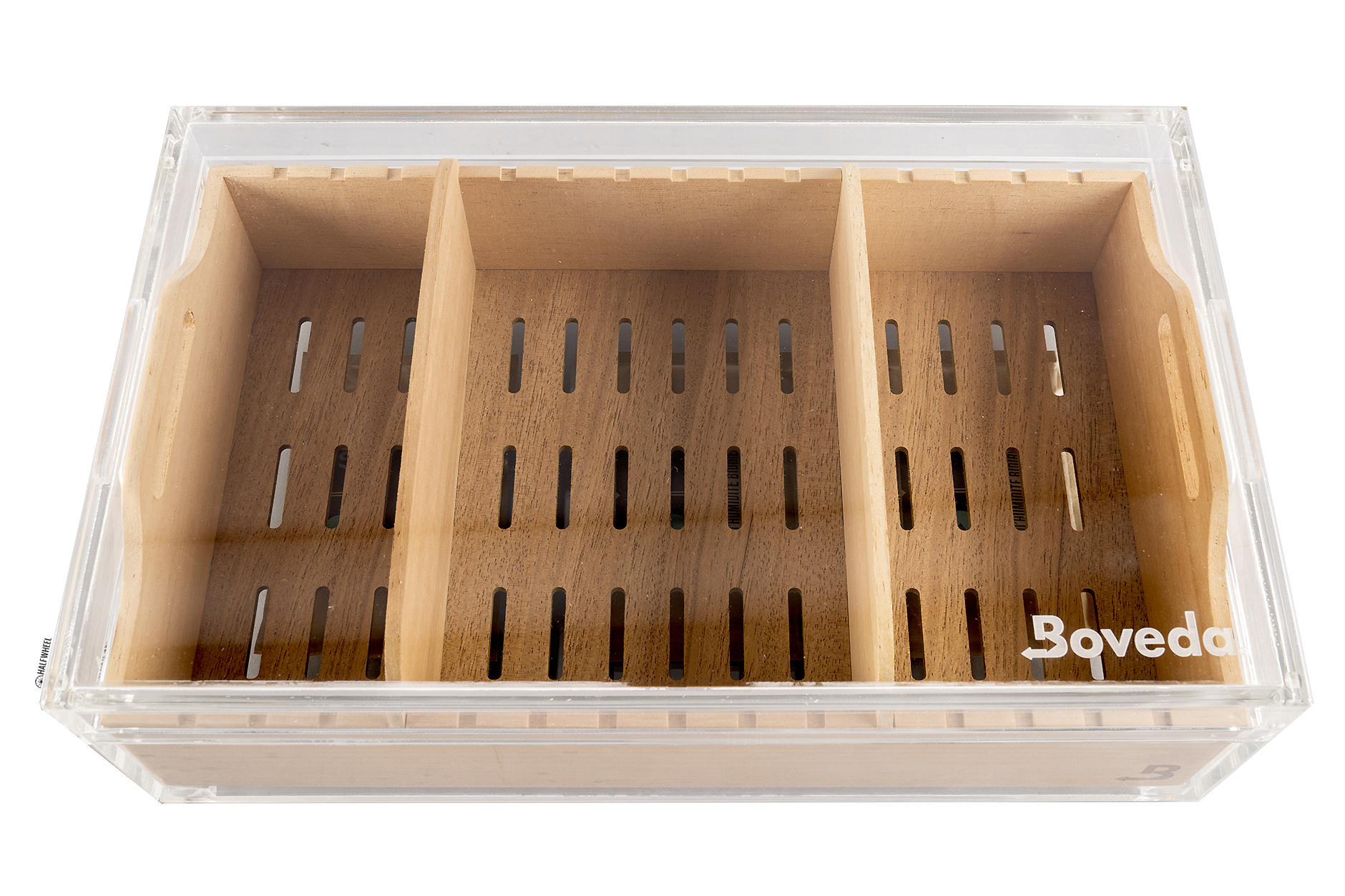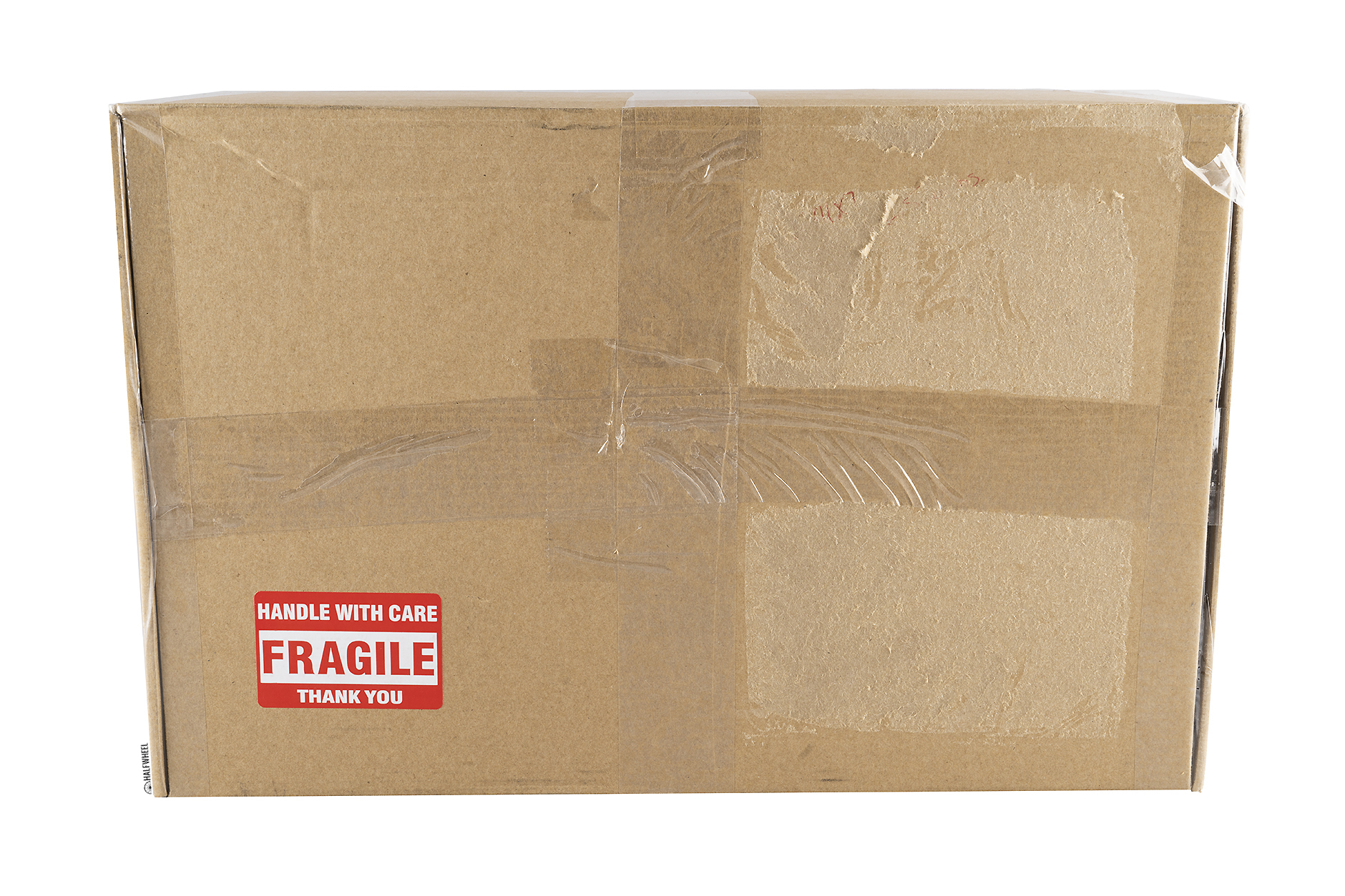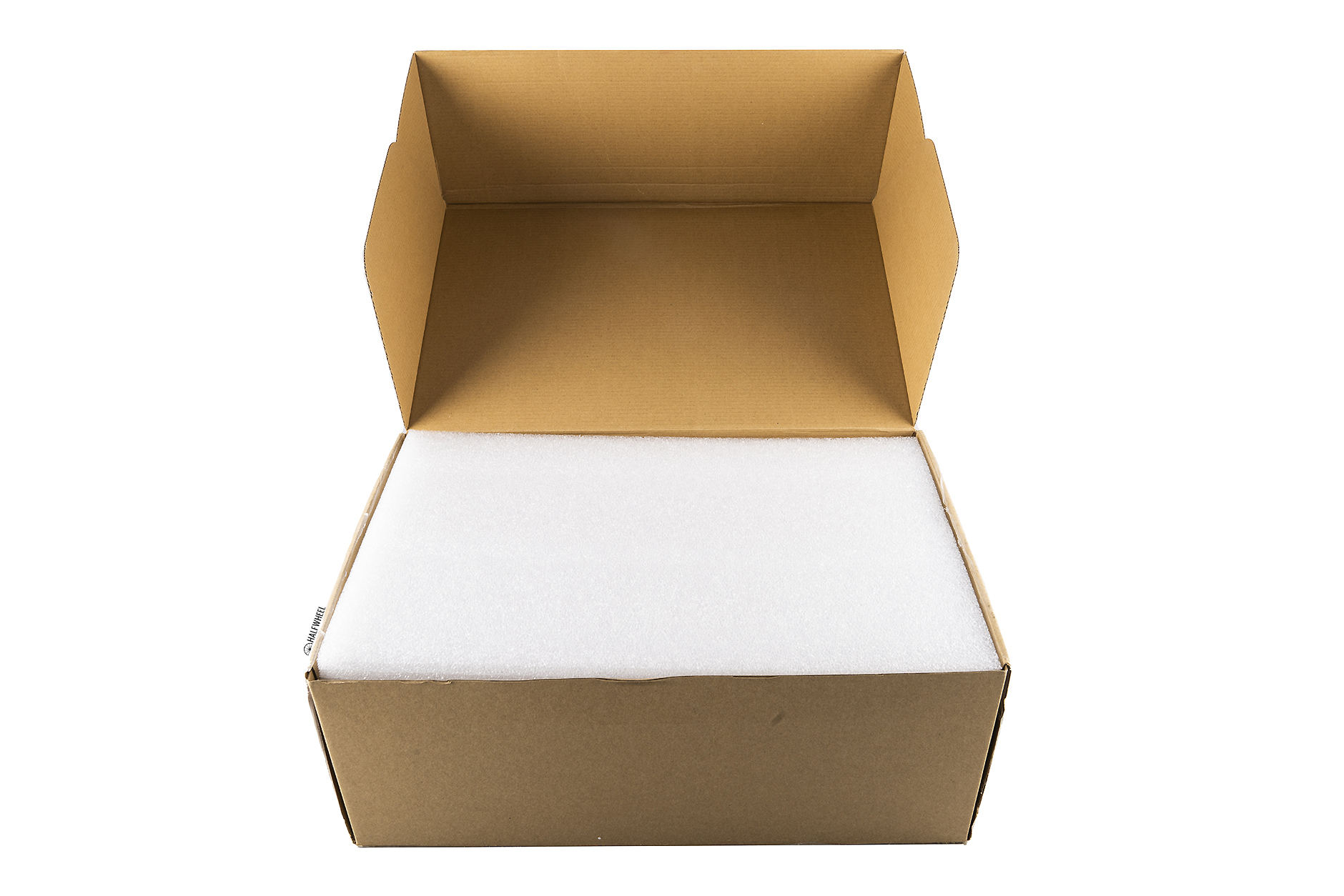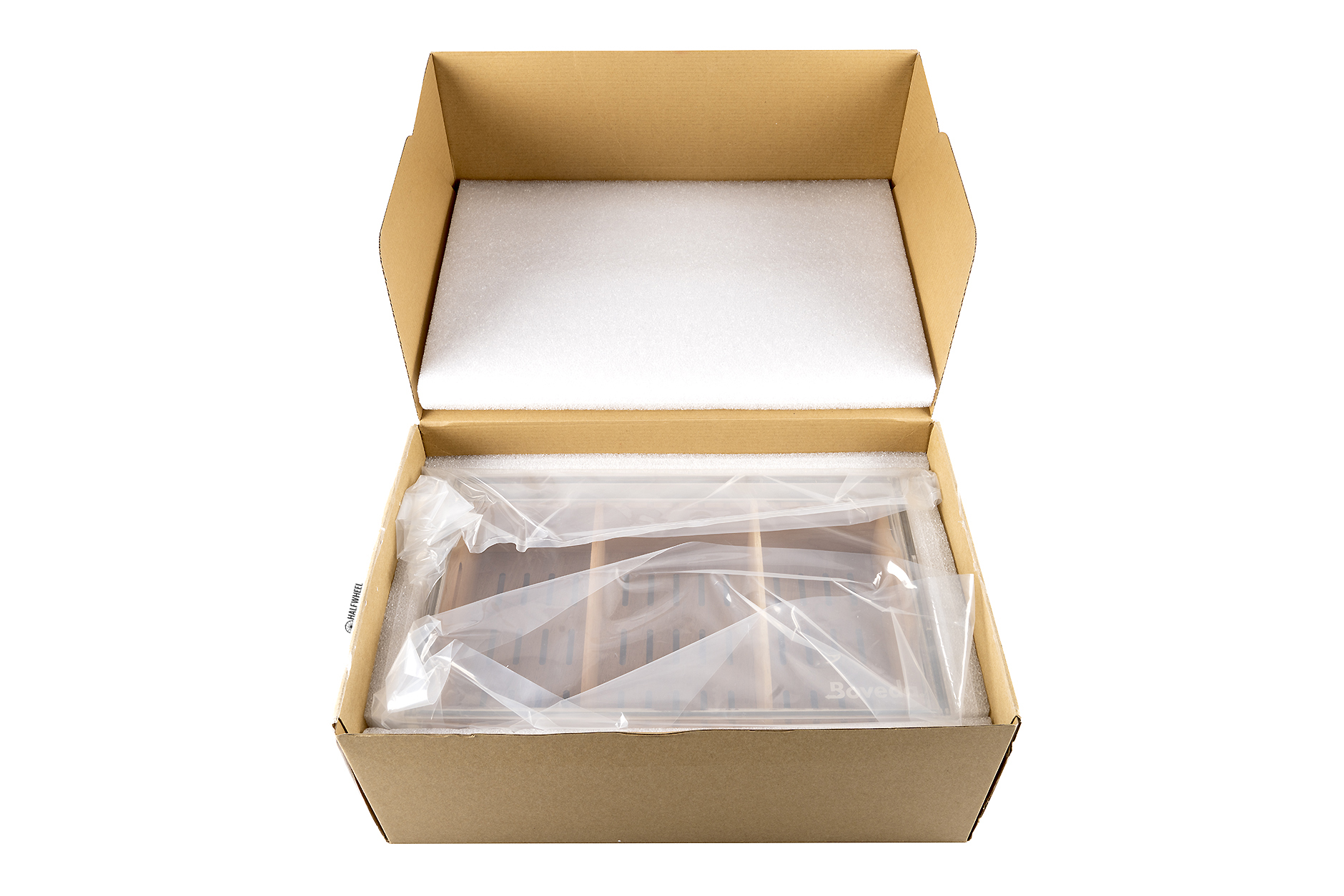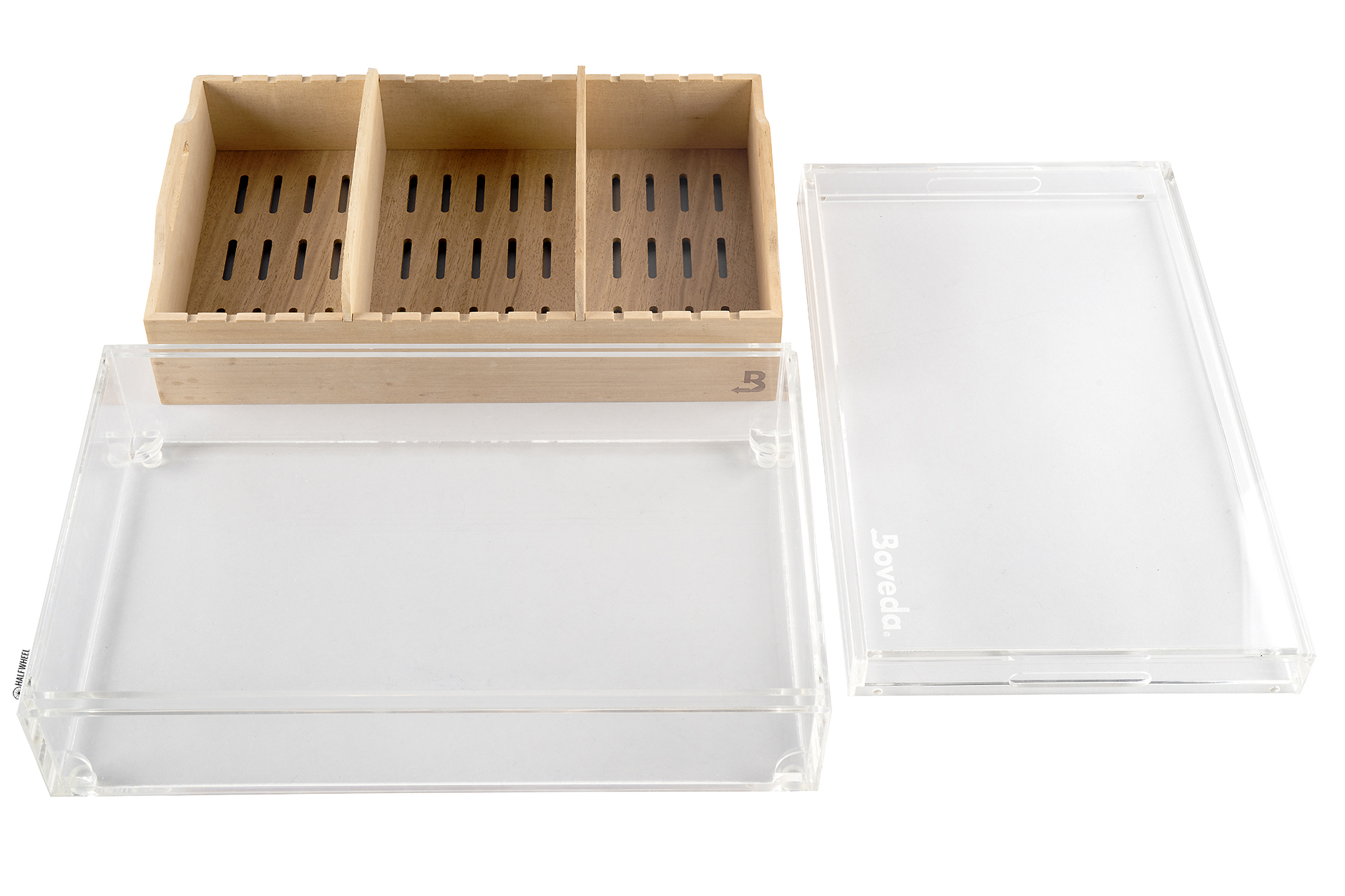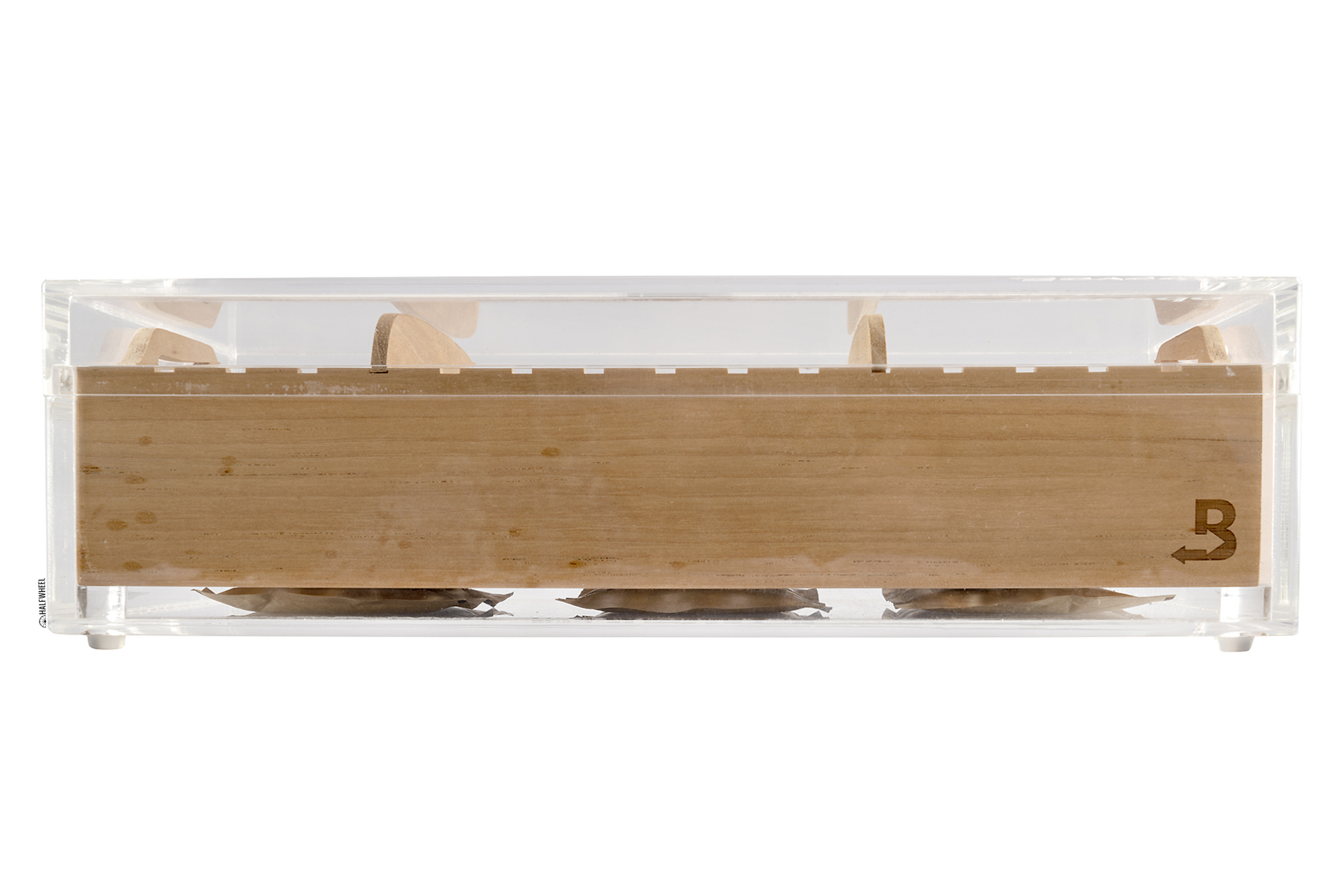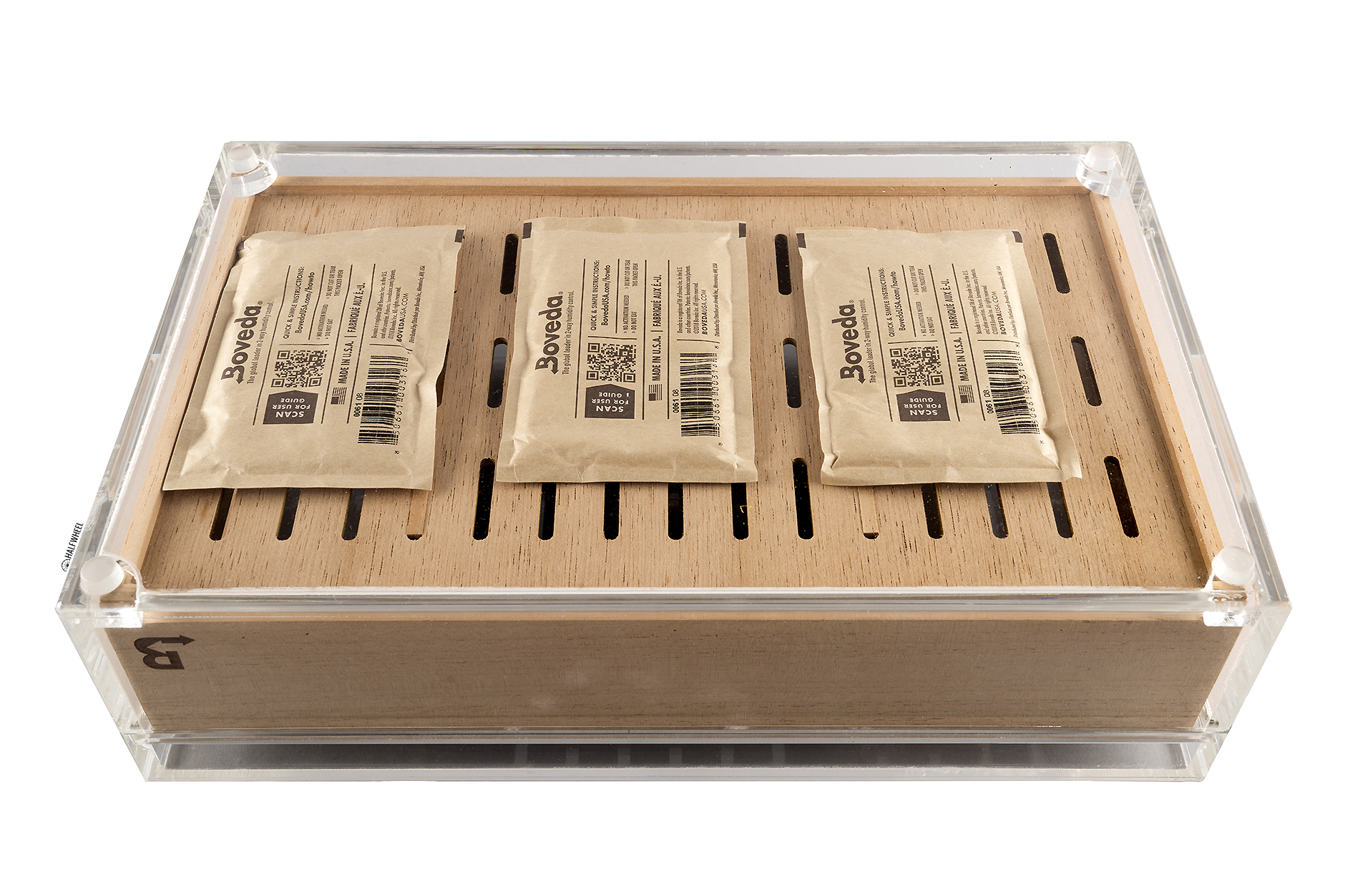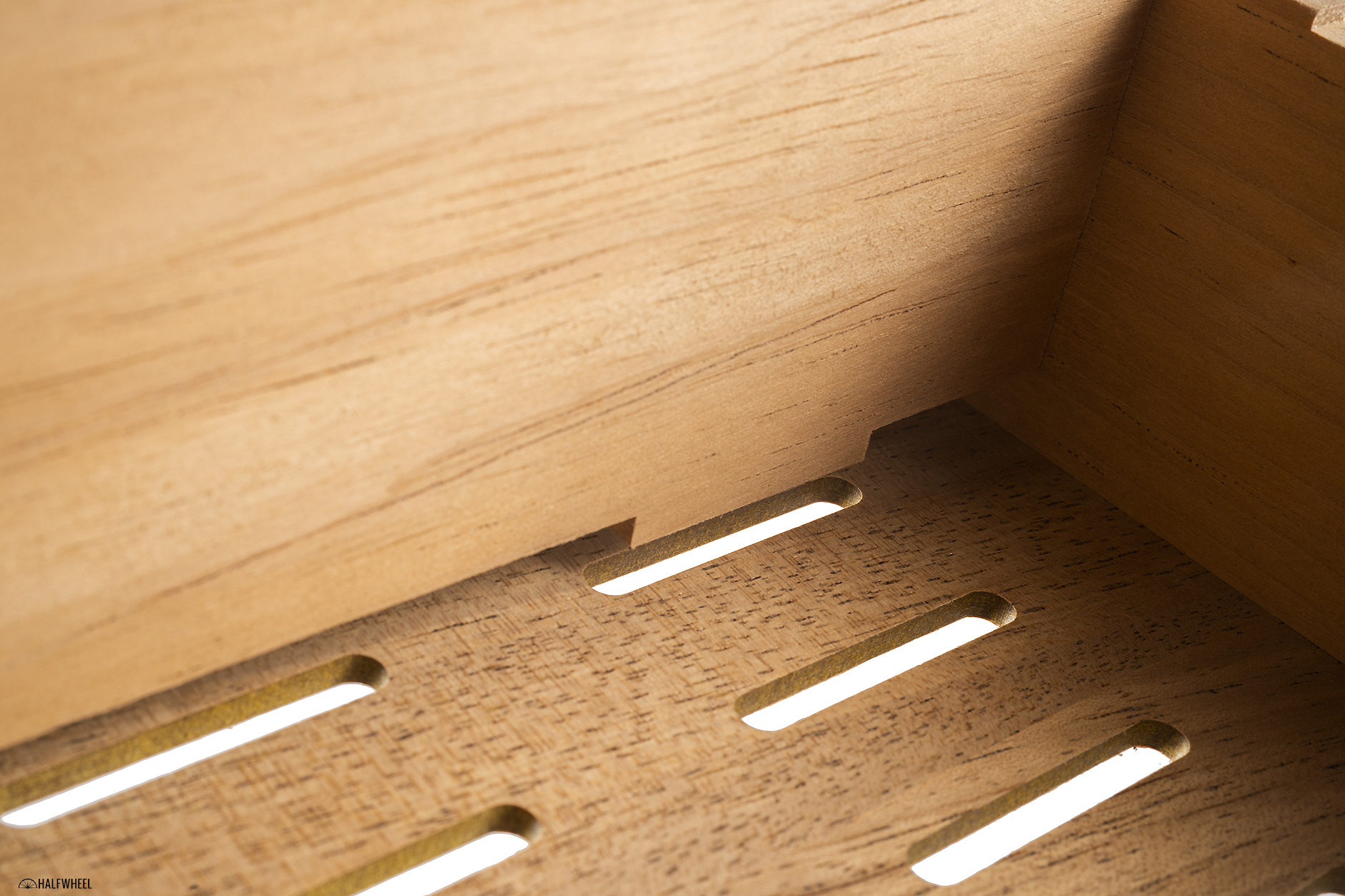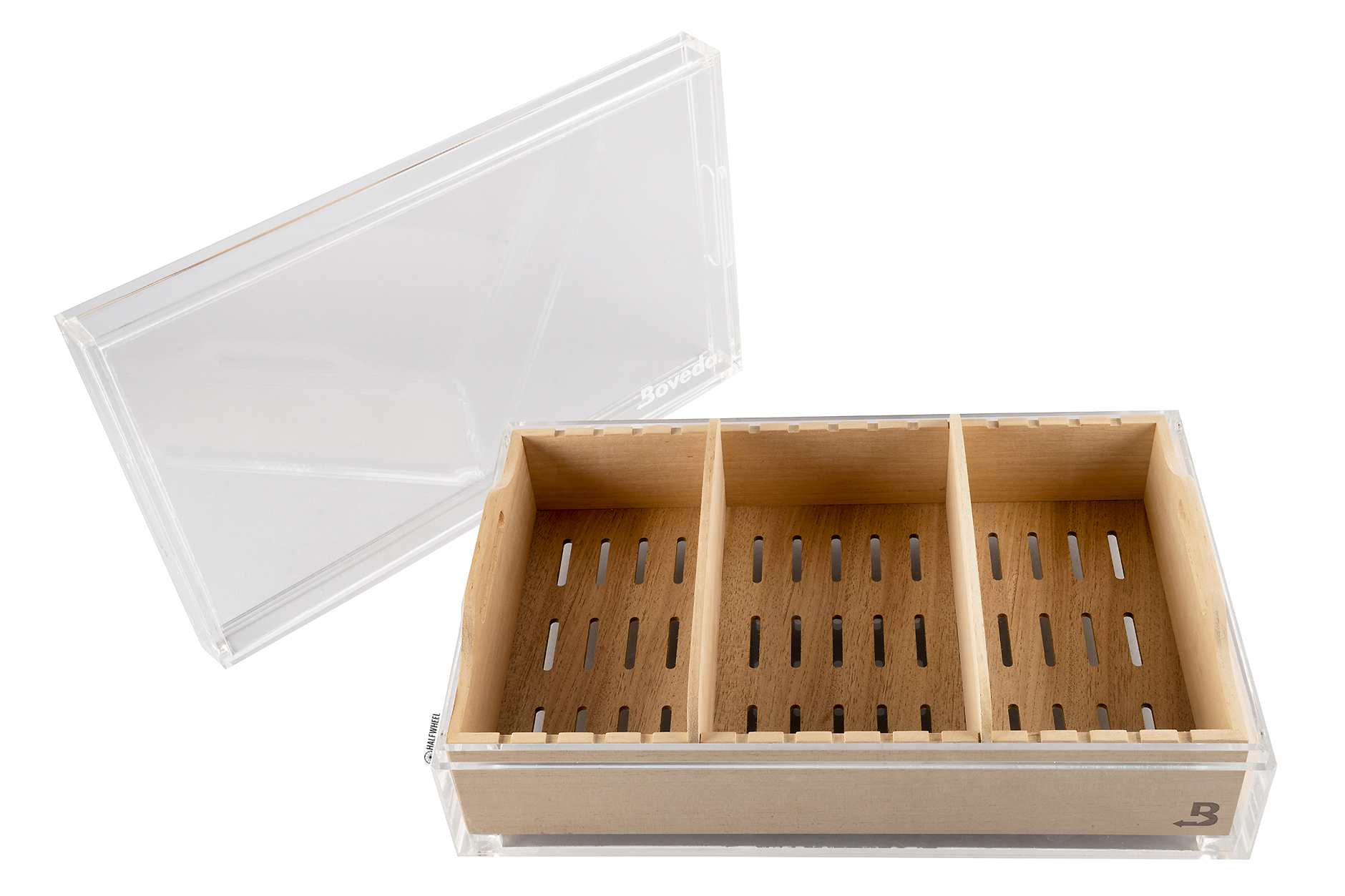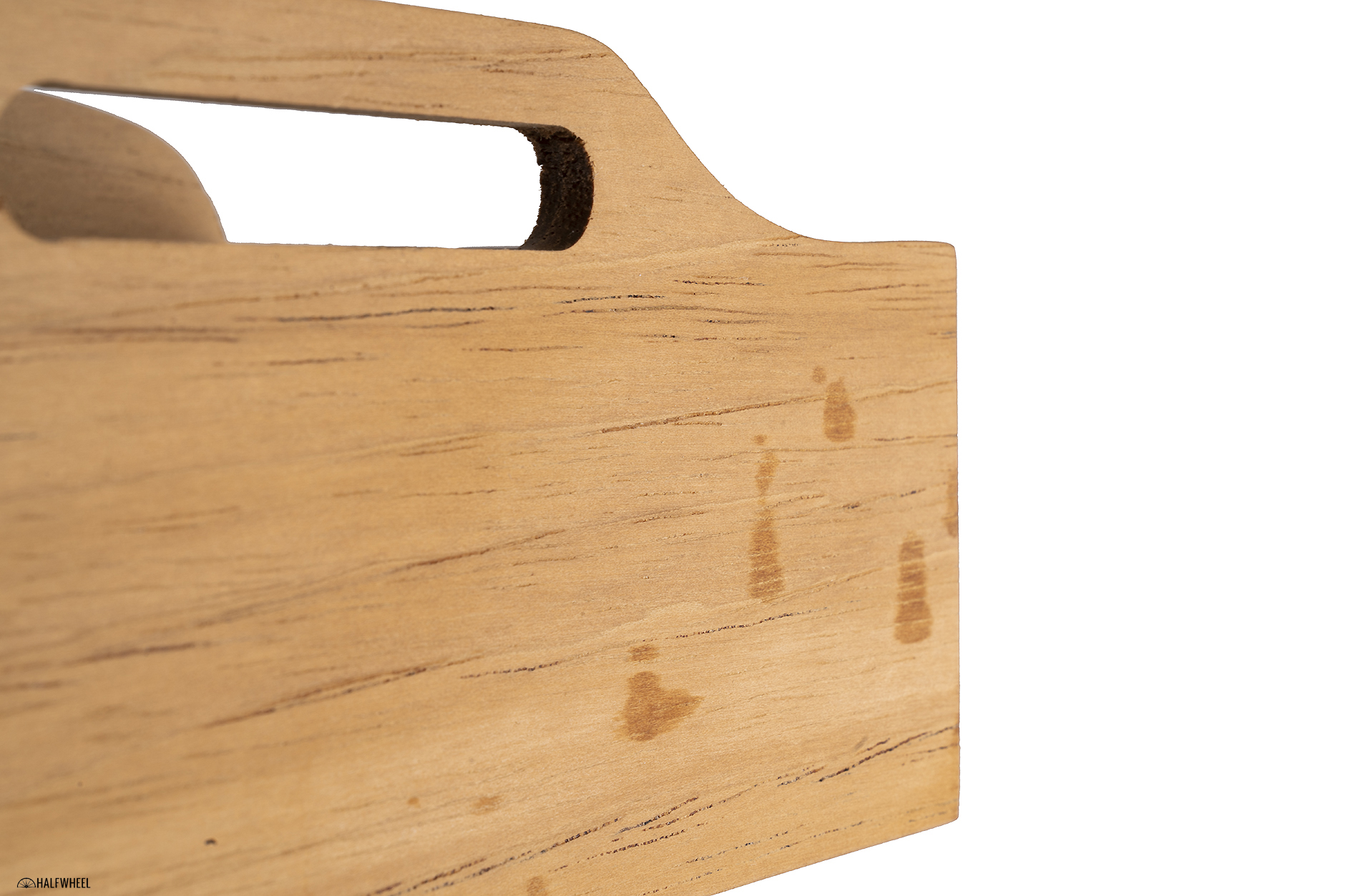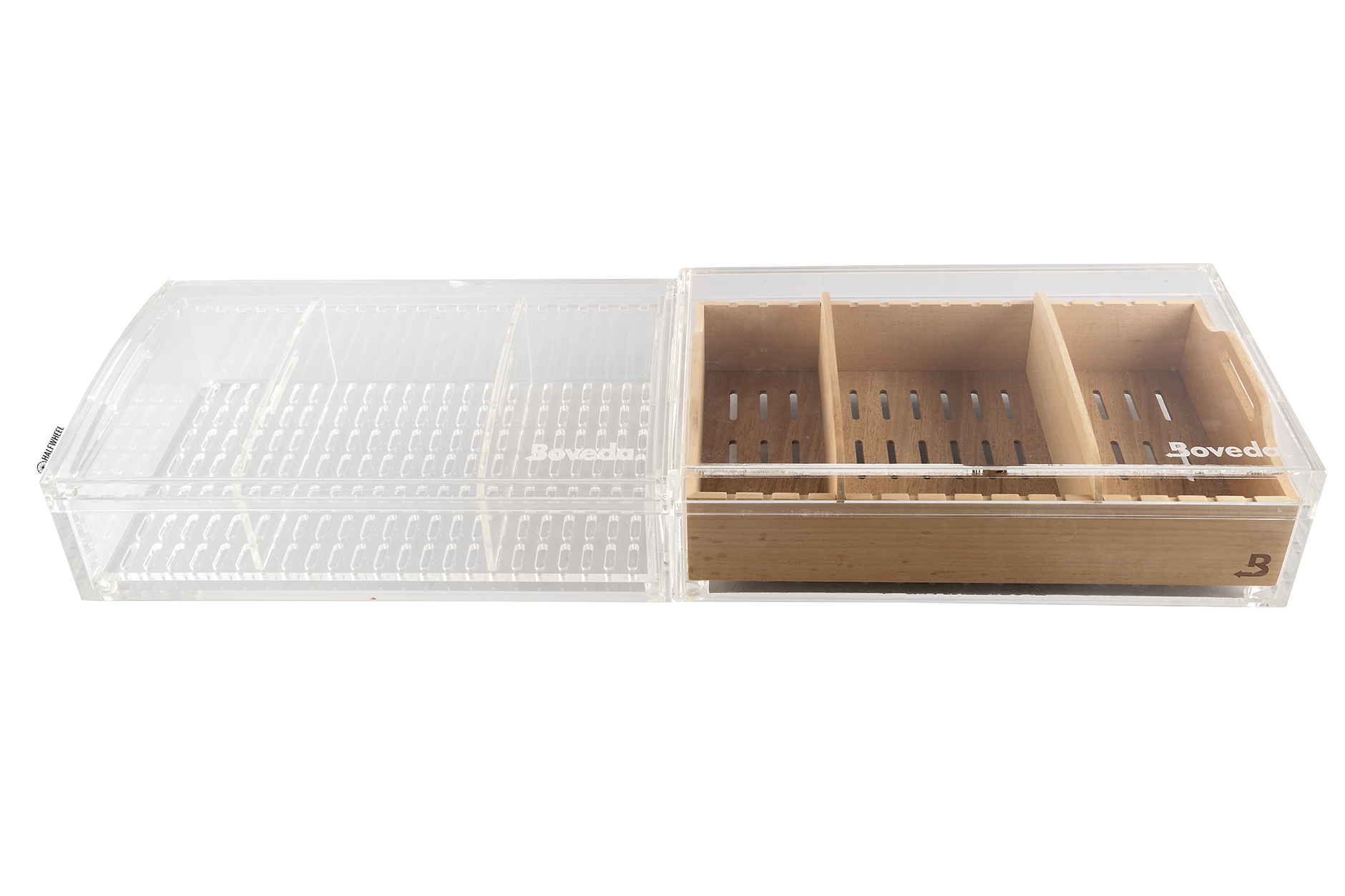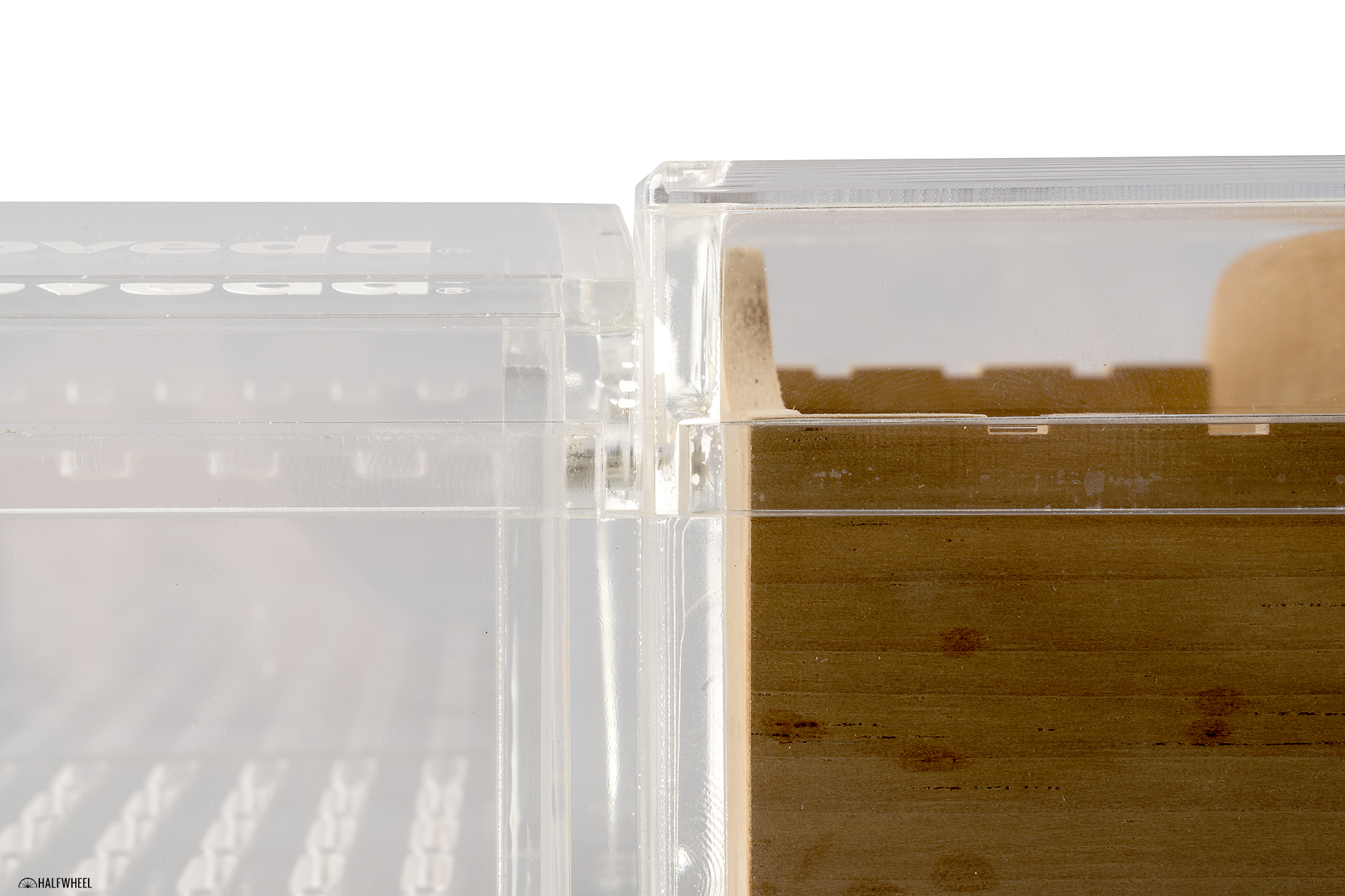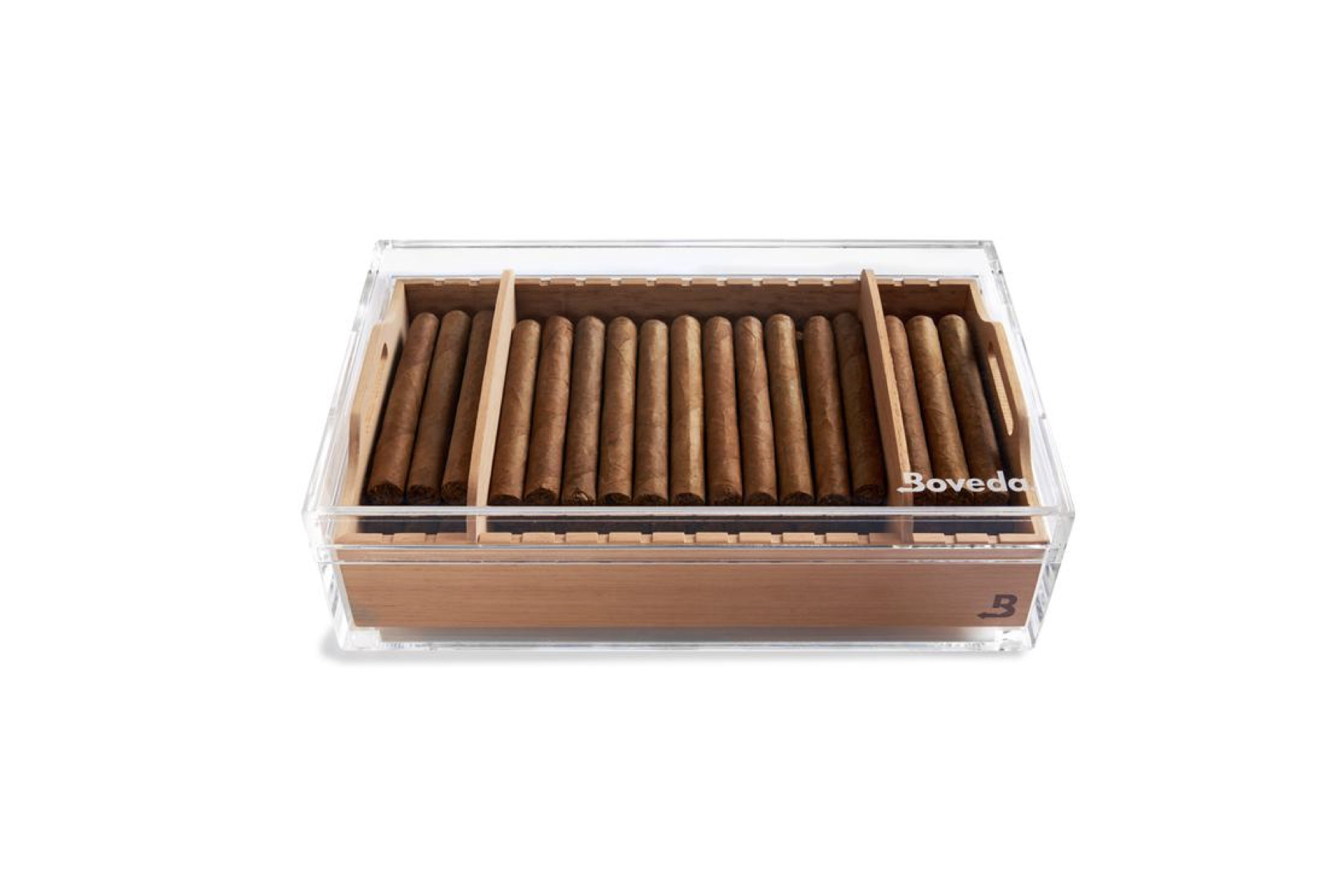My most recent accessory review was the final in a series of seven sub-$175 wooden humidors. I started all those reviews explaining why I decided to specifically look at those humidors and that price point. Buried further down in that review was this description of a humidor that I have used for years and one that almost would have qualified for the most recent series. It’s the Boveda Large Acrylic Humidor and there were four reasons as to why it wasn’t part of the series. The first is that I already reviewed the humidor, the second and third are explained below:
My thoughts on the old model are that the humidor is just over the $175 price point but would otherwise be the recommended option. It’s a large, see-through plastic box with a removable tray that allows you to show off your cigars. More importantly, it’s plastic, which means you don’t need to worry about seasoning it and really don’t need to worry about the seal. It just works. The issue with the Boveda is that it just doesn’t look like what most people think of as a humidor.
And the fourth is that Boveda updated its Acrylic Humidor design in mid-2021. While the new model is more or less the same design and concept that I loved, it’s not identical and the changes are impactful.
WHAT IS IT?
Before you read any further, you should really go back and read this review of the old model. I’ve committed to writing this review in a manner where you can understand this post without doing that, but it will make things a lot easier.
Boveda is a company best known for its eponymous humidity regulations packs, which are specifically targeted at humidifying cigars, marijuana or musical instruments, though they could be used for just about anything. Over the years, the company has introduced a few other associated products, including a series of humidors in 2015. Much like how Boveda packs didn’t look like a traditional cigar humidification device from the late 1990s, Boveda’s Acrylic Humidors don’t look like a humidor, especially the first series, which featured nothing but clear acrylic.
The concept is pretty simple, and it’s especially familiar if you know about terms like tupperdor or coolidor. Basically, given the advancements in humidification technology—cough, cough, products like Boveda—a humidor’s performance is largely based on how well it seals. Using wood—particularly wood that is designed to absorb moisture—is no longer necessary and has some obvious downsides, notably, it’s more difficult to maintain and can be quite finicky. Boveda decided to make a large plastic box—one that wouldn’t need to be seasoned—and one that would presumably have a massive advantage when it came to the seal.
It also looked radically different: it was all clear.
The original Acrylic Humidor was offered in two sizes: Small ($69.97) and Large ($197). Both had lids, which attach via small magnets in the corners, and the Large version featured a large tray with cut-outs to allow the humidity to travel from the packs below, while the Small version had a removable plate of sorts that served a similar purpose, albeit without being a tray.
Last year, Boveda announced that it would be updating the Acrylic Humidors with some changes. The most notable is that the tray is now made of cedar, dramatically altering the look of the humidor. Another change is that the lid is now flat, whereas the original model has a convex lid.
There are other minor changes: the new humidor is ever-so-slightly taller, the holes in the tray are larger, the handles cut-outs have been made larger, but it’s very similar with the exception of the cedar tray.
HOW MUCH DOES IT COST?
$199
WHAT’S INCLUDED?
The humidor, the removable tray with removable two dividers and three 60-gram 69 percent Boveda packs.
HOW LARGE IS IT INSIDE?
This is a unique humidor because I think using the tray actually means you can store more cigars than if you didn’t use the tray, which is the reverse of just about every other humidor I can think of. The tray takes up some space and means that you can’t put cigars against the floor of the humidor. However, the tray also adds about a half-inch of vertical height to the humidor. If you weren’t using the tray, cigars are likely to fall out of the sides of the humidor when opening and closing, so I’m guessing you are better off using it.
The tray measures 13.75 inches x 8.4375 x 3. That 348.05 cubic inches in volume equates to exactly 75 robusto cigars according to the Humidor Discount humidor calculator.
HOW DOES IT WORK?
A lot easier than most humidors.
When this product was introduced Boveda was adamant that the humidor, err tray, did not need to be seasoned. About two months later, I was told that Boveda was looking into whether or not the humidor should be seasoned.
The company’s stance, as of August 2021, is: a. it is not recommended to season this humidor; b. if you are going to season it, the company says three 84 percent packs for 48 hours will make sure the wood is hydrated enough, but not over hydrated.
Regardless of whether or not you season the humidor, it’s pretty straightforward once you are ready to put cigars inside:
- Open the humidor up, remove the tray.
- Place three 60-gram Boveda packs—grams is a reference to the size, not the relative humidity level—at the floor of the humidor.
- Place the tray back in the humidor, put the cigars inside, put the lid back on.
The tray has two removable dividers that can be moved laterally by pulling out the dividers and placing them within the slots on the bottom of the tray. There are also small cutouts along the front and back of the tray which also help to look in the dividers. If there isn’t a divider in the slots, those slots allow for the humidity to flow to and from the packets on the bottom.
From there, you just need to follow the normal Boveda humidity packet recommendations. I’d check on the packets every 90 days or so—in my experience, these packets are going to last more than double that amount of time—and you don’t want to mix different relative humidity levels. Beyond that, it’s a box to put cigars in.
WHAT MAKES IT SPECIAL?
I can’t think of very many humidors that have a removable lid, but that’s how this works.
Here’s another fun fact: you can put the old acrylic tray in the new humidor shell. You can’t mix and match any of the other parts successfully, but the old tray will fit inside the old humidor and the lid will close. Because Boveda doesn’t sell the trays by themselves, I don’t know why that would be remotely useful, but I was curious about it.
THE GOOD
- It Works Very Well — You might look at the chart above and be concerned that the relative humidity was averaging 67 percent and not 69 percent. I’d point out, that might be due to the SensorPush devices and not necessarily the Boveda. As with any humidor, the most important concern—after it can get into a desired relative humidity zone—is what the range is. That chart is based on 744 readings taken during December 2021, i.e. one each hour. The range of those results was just 3.7 percent relative humidity. It’s that good.
- It’s Just Easier — Whether or not you choose to season the tray, this is a much more carefree humidor than those that use wooden construction, particularly at this price point. The acrylic is going to function like a plastic bag or Tupperware container. It’s not going to absorb a noticeable amount of humidity, it’s also not going to put off a noticeable humidity like wood might. It also should neither smell nor warp. It’s likely stronger and less prone to most types of damage than the walls of wooden humidors at this price point. It really removes a lot of the things that typically go wrong in a humidor, especially at this price point.
- The Bovedas Last Longer Pt. 1 — This humidor doesn’t leak like a normal humidor. I suspect most of that is due to not using wood and some of it also because of the way this humidor seals: the whole lid is flush against the base and locks in with some magnets on the side. I placed the first three packets in the humidor for 30 days with no cigars inside, they started life at 186g and finished at 179g, a loss of 3.7 percent. I then placed three more packets—also weighing a combined 186 grams—in the humidor and put cigars in the humidor. I’ve been opening the humidor briefly a couple of times per week every week since then. In just over five months, the packets have lost 30 percent of their starting weight.
- The Bovedas Last Longer Pt. 2 — I don’t know how to conduct an air transfer test to tell you how much better this seals than a wooden humidor, but here’s what I do know: I replace the Boveda packets in the original Large Acrylic humidor I use about once per year. There are other wooden humidors on the same table—some that cost more than 10x the price of the Boveda—and the Bovedas in those humidors are getting replaced about three times per year. These humidors more or less get opened the same amount, etc, etc. Boveda advertises one-year lifespans for the packets, which might be a stretch if this humidor is getting opened daily, but the packets are going to last a lot longer because of the lack of air leaking out of the box.
- It’s an Efficient Use of Space — These walls are a lot thinner than most humidors and while the tray takes up a lot of the space-saving, this box is larger on the inside than comparable humidors would be. One major part of this is that the lid is removed completely and isn’t on a hinge. This not only save space because there’s no hinge, but it also maximizes the height of the interior in a way that is pretty unique.
- It’s Great for Presenting Cigars — I mentioned in my review of the original Boveda Acrylic Humidor that I had recommended it to a bar owner who also sells some cigars. Not only is it great for a retail setting like a bar, restaurant or coffee shop because it’s easy to maintain and see-through, but the fact the whole interior is a tray is extremely helpful if you are going to present the cigars to someone to choose from.
THE BAD
- It’s Not All See-Through — This was already a polarizing humidor design and while I think people will be generally less confused by it—now comforted by the fact there’s some cedar—I wish it was still all acrylic. The see-through nature of the humidor is a look that I love, especially when the cigars are all out of their cellophane. It’s certainly not an avant-garde look, but it’s incredibly modern and luxurious.
- Blemishes Have Nowhere to Hide — Over the years, I believe I’ve purchased four Boveda humidors and received an extra one because Boveda actually sent the old model when we purchased the new model to review. This is at least the second and maybe the third that has had some pretty noticeable blemishes on the acrylic. There’s probably a way to ship these to people without them showing up with blemishes, but I’m guessing it involves packing every part individually, putting protective film over every surface and a lot of other work that would add to the price.
- The Tray Has Blemishes Too — There’s was, what appeared to be some glue residue on two exterior panels of the tray, when the humidor arrived. Unfortunately, when the rest of the humidor is see-through, these blemishes become a real eyesore.
- Introducing Wood Into the Equation — While many will love the use of cedar, I’m not in that camp. One of the best parts of the old version of this humidor was that it didn’t use any wood and, as such, didn’t come with any of the drawbacks of using wood: seasoning, maintenance, warping, aromas, etc. Now, there’s cedar and while most of the potential issues are likely greatly reduced in terms of probability and/or impact, they aren’t zero like before.
THE COMPETITION
The most obvious competitor is the original Acrylic Humidor ($197) and I like that one better because of the aesthetics. If you can still find it, I would say your choice should just come down to looks and whether or not you want the cedar smell. Other than that, these two humidors are more or less the same.
Other Competitors
- Zino Acrylic Transparent Humidor ($300) — Davidoff offered an acrylic humidor under its Zino label. These humidors are smaller, more expensive, and not easy to find these days. I’ve never used it but it’s an option if all you are after is an acrylic humidor.
- Savoy Marquis ($111.95) — This humidor has a unique design that shows a visible gap in the seal on the back. After thinking about this more—albeit, without anyone from the company mentioning this review to me—I think I might have been wrong about this humidor. It’s solidly made for the price and the performance has been pretty good.
- Yannabis Cigar Humidor ($159.99) — This is an obvious knock-off of a high-end Colibri/Daniel Marshall humidor that I liked a lot. While it’s a knock-off from a company I’ve never heard of, it actually worked. There were issues with paint overspray and I would not expect any form of customer service but maybe you get some.
- Colibri Heritage Humidor ($495) — If you want a wooden humidor that is going to last, I think you are going to want to spend closer to $400. The Heritage Humidor can regularly be found at that price point and it’s just so much better in just about every way. It feels solid, it avoids the major manufacturing flaws and it has a much more modern look, albeit one that isn’t for everyone.
- A Tupperware Container — At some point during this review, you might have thought to yourself that you could do this cheaper and you can. The Boveda Acrylic Humidors are just more polished versions of a pretty simple concept: a sealed plastic container with Bovedas inside. If you aren’t worried about the looks, are more concerned with the price, or need something larger—there are other options.
SHOULD YOU BUY IT?
Yes.
Over the years I’ve given out a lot of humidor recommendations and they generally have always mentioned three options: the Savoy Executive line of humidors, some sort of plastic bin, and a hybrid solution, the original Boveda Acrylic Humidor. While I like the old one better than the new one, it’s not going to stop me from recommending this humidor. The beauty of the humidor is that it removes or minimizes so many of the problems most people have with their humidors: seasoning and/or maintenance. The reason why I recommended the old Acrylic Humidor so much was because I knew that I didn’t really have to worry about the person asking for the recommendation to mess up. While I don’t think the new Boveda Large Acrylic Humidor can be as foolproof as the original one, It’s about as close as you are going to get. There’s not a humidor at—or close to—this price point that is going to do a better job of keeping your cigars at your desired humidity. So long as you can live with the looks, I suspect anyone will be able to live with the performance, because it’s more or less the best you’re ever going to find. After all, it’s basically a fancy Tupperware container.
The humidor for this review was purchased by halfwheel. Boveda advertises on halfwheel.

